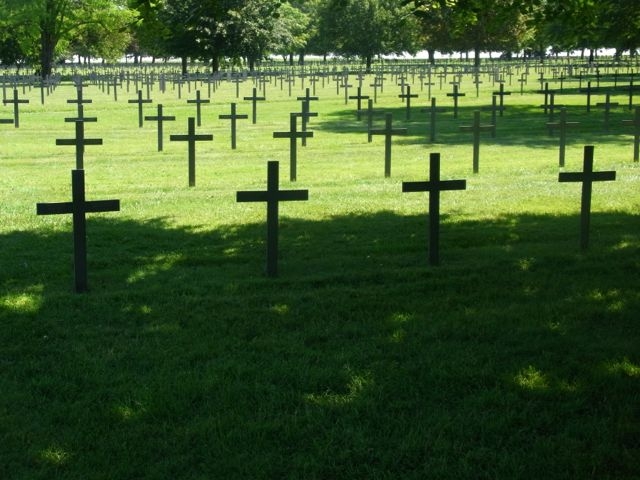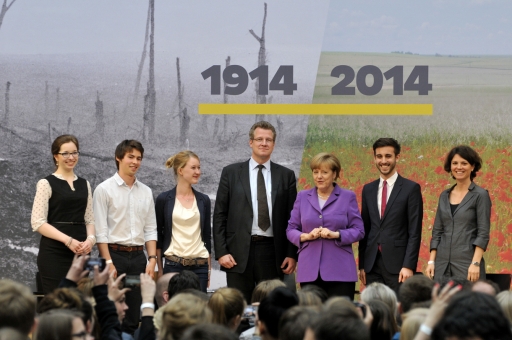The German Chancellor, Angela Merkel, has opened a special exhibition marking the Centenary of the First World War at the German Historical Museum in Berlin.
After touring the displays, Mrs Merkel declared that European unification was the decisive lesson of the continent’s painful past.
The Museum says Der Erste Weltkrieg 1914-1918 is the only exhibition in Germany providing an overview of the Great War in its European context and global dimension.
Focussing on the escalation of the violence, it examines how this experience changed not only subsequent wars, but also political thought and action in the 20th century.
Fourteen places, chosen to represent important developments in the war, are used to illustrate the years 1914 to 1918, both on the battlefield and in countries that fell under occupation.
From the Battles of the Marne and Tannenberg, through to the attrition of Verdun, the Somme, Ypres, Gallipoli and the Tyrolean mountains, visitors are led to the final offensives in 1918 which brought about the German defeat.

The German military cemetery at Neuville-St.Vast, France: last resting place of almost 45,000 soldiers (Photo: Centenary News)
The global expansion of the conflict saw Germany wage a guerrilla war in the forests of East Africa, with the aim of tying down British, Belgian and Portuguese forces so they could not be redeployed elsewhere.
Britain, the exhibition notes, depended primarily on colonial Indian and South African troops. All sides forcefully recruited hundreds of thousands of indigenous porters to support their tropical campaigns.
Civilians were also caught up in the fighting in Europe. Reprisals, forced labour, hunger and disease were suffered on both the Eastern and Western Fronts. Warsaw and Brussels became occupied cities under German administration. Russian forces destroyed villages as they retreated.
The exhibition points out that “prejudice against the ‘backward East’ deepened and continued to affect attitudes in the German Reich after the war.”
Austria-Hungary, it says, conducted a war against sections of the empire’s own population, executing and interning civilians as suspected spies.
Under pressure from the British naval blockade, German cities grew increasingly hungry. A million people joined a political strike in January 1918, demanding peace and bread. Revolution in Russia brought the Bolsheviks to power in 1917. America’s entry into the war in the same year contributed to Germany’s defeat.
Out of the lost empires, new states arose in the eastern and southeastern parts of Europe, creating fresh tensions over borders and ethnic minorities.
Hopes of a lasting peace were frustrated. As the exhibition notes: “For millions of people the war brought death, hunger and disease, flight and internment, revolutions and border changes.
“The experience of violence, which grew in the course of the war to an unprecedented degree, brought about a lasting change in European societies and influenced all further political thought and action.”
Europe learns
During her visit to the exhibition on 28th May 2014, Chancellor Merkel discussed the First World War and its aftermath with a group of students from Germany and abroad.
She said the development of the European Union showed that people and states could learn from history.
The Chancellor coupled this with a warning that Russia’s annexation of Crimea in 2014 showed how quickly peace and freedom could be compromised.
The exhibition carried the central lesson of the need for cooperation, not confrontation, Mrs Merkel said.
The First World War 1914-1918 can be seen at the German Historical Museum (Deutsches Historisches Museum) in Unter den Linden, Berlin, until November 30 2014.
There will also be a series of lectures by international historians and film showings.
Information and pictures supplied by Deutsches Historisches Museum, Berlin; German Federal Chancellor’s Office.
Posted by: Peter Alhadeff, Centenary News
